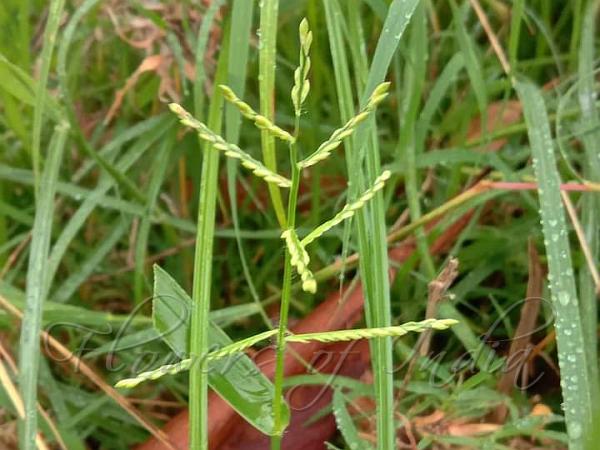|
| Creeping Signal Grass |
|

|

|
|
|
|
Photo: |
Botanical name: Urochloa reptans Family: Poaceae (Grass family)
Synonyms: Brachiaria reptans, Echinochloa reptans, Panicum reptans
Synonyms: Brachiaria reptans, Echinochloa reptans, Panicum reptans
Creeping Signal Grass is an annual grass with stems
slender, creeping, rooting at lower nodes, rising up to 10-50 cm tall.
Leaf sheaths are hairless, one margin densely fringed with hairs; leaf
blades lanceshaped, 2-6 x 0.3-1.2 cm, hairless or loosely bristlyulous,
base somewhat heart-shaped, margins scabrous, pectinate-fringed with
hairs at base; ligule about 1 mm, fringed with hairs. Inflorescence is
pyramidal, axis 1-8 cm; racemes 3-6, 0.5-4 cm, spreading; axis
triquetrous, scabrous; spikelets paired, crowded, flower-stalks
bristly. Spikelets are ovate or ovate-elliptic, 2-2.5 mm, usually
hairless, pointed; lower glume cufflike, 1/8-1/4 spikelet length,
thinly membranous, upper lemma broadly elliptic, 1.8-2 mm. It is a good
fodder grass whose grain has been used as food in times of famine.
Creeping Signal Grass is found Arabian Peninsula, tropical Asia to
Australia.
| Identification credit: Ankush Dave | Photographed in Aranya Ashram, Mandla, Madhya Pradesh. |
• Is this flower misidentified? If yes,